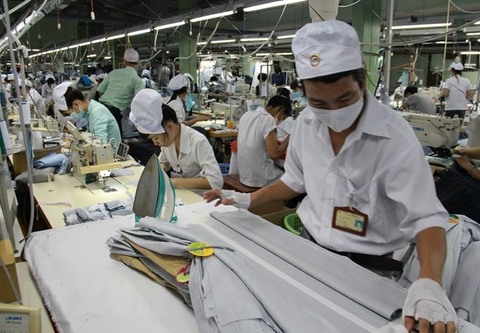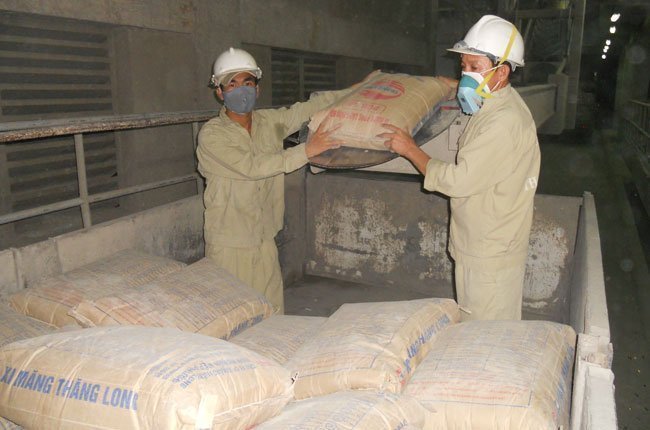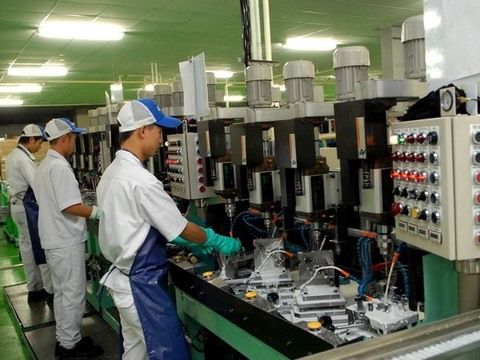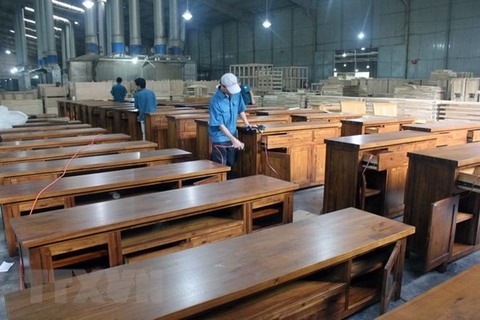Viet Nam targets $40 billion in exports from textile and garment industry
Viet Nam targets $40 billion in exports from textile and garment industry
Vietnam Textile and Apparel Association (VITAS) set the industry development target this year for export turnover at US$40 billion, which would mark a 10.8 per cent year-on-year increase.

The industry’s trade surplus is expected to reach $20 billion this year. Employment will be ensured and income for 2.85 million workers would be increased, said VITAS.
These targets were based on a successful year in 2018, when export turnover of garments and textiles products reached more than $36 billion, marking a year-on-year increase of 16 per cent. This level of growth would make the nation one of the top three largest exporters of textiles and garments in the world.
In addition, the Comprehensive and Progressive Agreement for Trans-Pacific Partnership (CPTPP), which came into effect last month, was expected to help the economy grow by 1.3 per cent. It should boost export turnover by 4 per cent. The textile and garment industry is seen a key sector with many opportunities to expand the market.
Chairman of VITAS Vu Duc Giang said the signs for order statuses for 2019 were also very positive. Many businesses already had orders for the first six months of this year and even the whole year.
“The sector has gradually completed the supply chain thanks to increasing flow of capital invested in the textile and dyeing industry, making its products more competitive,” said Giang.
Import of raw materials should be reduced
According to Chairman of the HCM City Textile and Garment – Embroidery Association Pham Xuan Hong, CPTPP will have an impact on the sector. It will cut import tariffs and diversify products available in CPTPP member countries.
Hong said that although the sector had prepared for the implementation of the trade deal, many businesses had not yet met the demands.
“Enterprises have tried to limit imports of raw materials but still have to import over 60 per cent of foreign raw materials, of which 50 per cent comes from China,” Hong said. “Therefore, enterprises need to understand the regulations, customs procedures and logistics laid out in CPTPP.”
The State should support businesses by creating a fair playing field and minimising administrative procedures to raise competitiveness in domestic market,” he said.
Cao Huu Hieu, Managing Director of Viet Nam National Garment and Textile Group (Vinatex), said the sector would have many opportunities to grow and challenges as the country started to implement the agreement this year.
Hieu said with the strength of the country’s capital, experience, technology and labour force, many foreign-invested enterprises would establish production chains from yarn, fabric and garments in Viet Nam.
“If businesses do not invest and improve capacity, it will be difficult for them to compete in the domestic market, especially with products coming in from CPTPP member countries,” Hieu said. “They need to take initiative in producing raw materials and minimising dependence on imported materials to help the industry enjoy the benefits of CPTPP.”
Hong said that technical standards were not a big problem for Vietnamese garment enterprises. However, requirements for the origin of yarn, weaving and dyeing – which must be met under CPTPP – were a big challenge because Viet Nam imports more than 60 per cent of raw materials from outside CPTPP member nations.
He said solving raw material sourcing issues was not a simple task. "CPTPP is considered one of the factors attracting foreign investment in the raw materials manufacturing industry. However, this industry carries risks of environmental pollution if outdated technology is used."
“Management agencies will have to carefully consider the benefits of raw materials for production and environmental impacts before granting investment licences,” Hong said.






